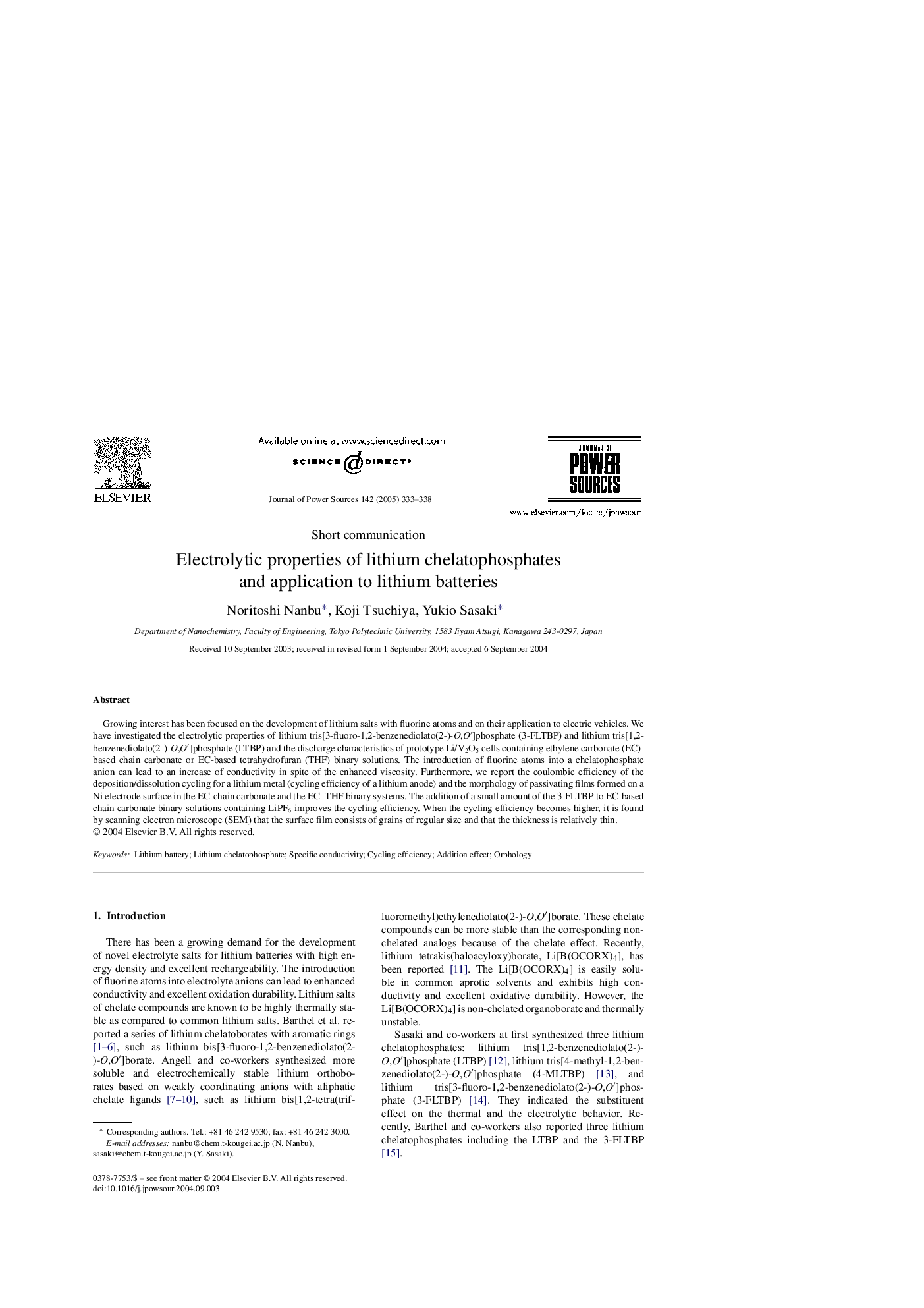| Article ID | Journal | Published Year | Pages | File Type |
|---|---|---|---|---|
| 9760448 | Journal of Power Sources | 2005 | 6 Pages |
Abstract
Growing interest has been focused on the development of lithium salts with fluorine atoms and on their application to electric vehicles. We have investigated the electrolytic properties of lithium tris[3-fluoro-1,2-benzenediolato(2-)-O,Oâ²]phosphate (3-FLTBP) and lithium tris[1,2-benzenediolato(2-)-O,Oâ²]phosphate (LTBP) and the discharge characteristics of prototype Li/V2O5 cells containing ethylene carbonate (EC)-based chain carbonate or EC-based tetrahydrofuran (THF) binary solutions. The introduction of fluorine atoms into a chelatophosphate anion can lead to an increase of conductivity in spite of the enhanced viscosity. Furthermore, we report the coulombic efficiency of the deposition/dissolution cycling for a lithium metal (cycling efficiency of a lithium anode) and the morphology of passivating films formed on a Ni electrode surface in the EC-chain carbonate and the EC-THF binary systems. The addition of a small amount of the 3-FLTBP to EC-based chain carbonate binary solutions containing LiPF6 improves the cycling efficiency. When the cycling efficiency becomes higher, it is found by scanning electron microscope (SEM) that the surface film consists of grains of regular size and that the thickness is relatively thin.
Related Topics
Physical Sciences and Engineering
Chemistry
Electrochemistry
Authors
Noritoshi Nanbu, Koji Tsuchiya, Yukio Sasaki,
